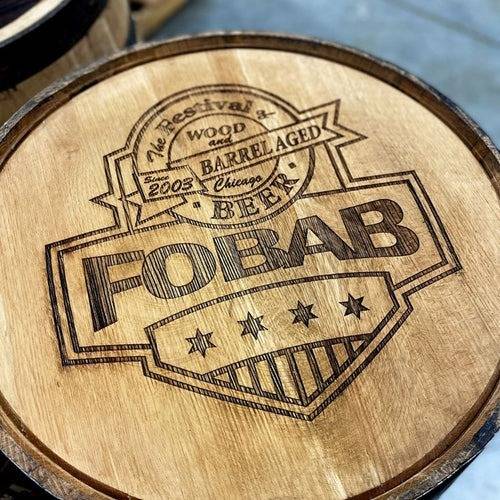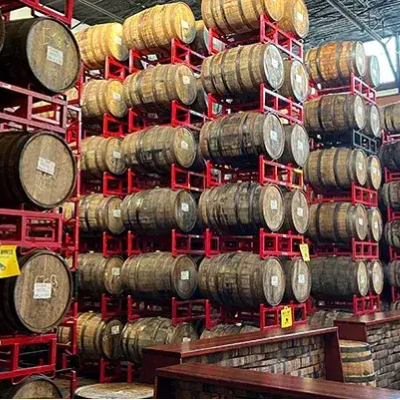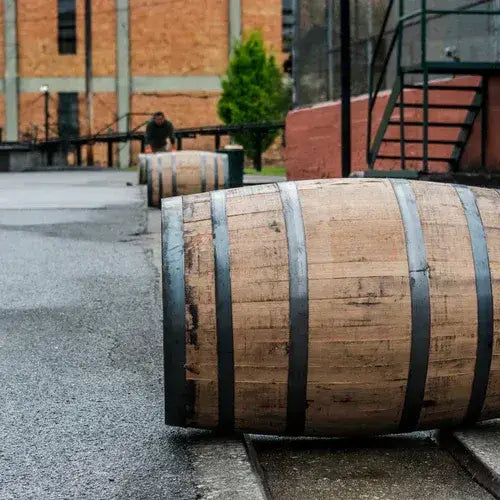Barrel-Aging 101: How to use a 'Vinnie nail' ON A WHISKEY BARREL
July 20th, 2022

Craft brewers, winemakers, mead makers and other barrel-aging pros know the importance of quality control. They have both the nose and palette needed to know the moment their hard work has paid off in the form of a delicious, flavorful brew. One sip or even whiff of their beer, wine, mead or cider and they know whether they have a hit on their hands.
It’s the same with barrel-aged beverages. You have to develop a sense of what kind of flavors you want to pull from the oak and how those flavors interact with what’s inside the barrel.
The challenge, of course, is taking samples from the barrel. You can’t remove the bung, or at least we do not recommend you remove the bung. That’s a recipe for oxidation, a problem to avoid for both homebrewers and commercial breweries that will negatively affect the flavor and smell of your brew.
Luckily, the most common solution used throughout the barrel-aging industry is easy to accomplish. All you have to do is install a Vinnie nail in the barrel head. Once tapped into the oak, you can pull out the nail to taste a small sample and then quickly replace without losing too much beverage to the floor drain.
What is a “Vinnie nail”?
Never heard the term “Vinnie nail” until now? A “Vinnie nail” is simply a small-to-medium-sized nail driven into the head of a barrel through a pre-drilled hole for sampling purposes. They get their name from the man who first came up with the idea, Vinnie Cilurzo, the co-founder and brewer at Russian River Brewing Company.
Cilurzo’s brewery is known for popular beers such as Pliny the Elder, an IPA, but they have a broad range of barrel-aged beers, too. As far as craft breweries go, Russian River Brewing Company has been in the business for a long time. It’s usually a wise move to trust the advice of veterans.
As for the nail, the nickname has certainly stuck, as nearly all barrel wranglers and slingers out there call these nails “Vinnie nails.” They’re the perfect solution to taking a sample from any bourbon barrel, whiskey barrel, wine barrel or other barrel that you are using to age beer, cider, mead or other brew.
Watch: How to install a Vinnie Nail
Continue reading for more detailed instructions and tips on how to make sure your Vinnie nail installation and future samplings are successful.
Use a stainless steel nail for your
Vinnie nail
While there are some nails out there made of more expensive material, the most widely used nails for sampling from barrels are traditional 316 stainless steel 4d size nails (common smooth shank) because the material is more resistant to rust and can be easily sanitized.
Note that you may find 304 stainless steel nails, but these will not be as resistant to rust as the higher-quality 316 stainless steel. Do yourself a favor and go with 316, even if it is slightly more expensive.
You can find suitable nails that can be used as Vinnie nails at many homebrewing and brewery equipment suppliers, but to be honest, just about any hardware store will carry what you are looking for – and will likely save you some money.
When looking for nails, pick one that isn’t too big that it’s going to allow too much liquid to flow out of the barrel. Also keep in mind that the nail has to be large enough that you can collect a decent sample size relatively quickly.
The first filling

While how to install and use a Vinnie nail are two very straightforward processes, there are a few tried and true methods that will help you avoid any trouble and decrease the risk of damaging the barrel.
The first step is to make sure everything is sanitary. Spray the drill bit, nail and area of the barrel head where you will be inserting the nail with isopropyl alcohol or similar sanitizing solution to keep everything clean. Used oak barrels can be an ideal environment for all sorts of bugs. Sometimes that’s by design, while other times it is not.
Now it’s time to insert the Vinnie nail. Before you pick up your nail, you will want to drill a starter hole into the head. If you are using a 4d size nail, then a 7/64 hole will give you enough of a head start. You can drill the hole and insert the nail with a full or empty barrel.
To avoid a mess, drill the hole almost but not all the way through the wood. It’s not a big problem if the bit does go all the way through, but be sure to have a glass ready if you don’t want to waste any product.
After the bit is out of the way, insert the nail by hand and then carefully tap it in the rest of the way with a hammer.
Project complete! Simply spray the area again before removing the nail to sample. Have containers ready to catch the liquid samples as soon as the nail is removed and until it is replaced.
When should you sample from the barrel?

Now that the Vinnie nail is in place, sampling will be a breeze.
Sampling frequency depends on your experience level with whatever you are aging or just on your curiosity. Some craft beer brewers will sample sours aging in oak barrels every couple of weeks, while many others will let other beers, such as stouts aging in bourbon barrels, sit for a few months before sampling once per month.
It’s truly up to how comfortable you are with the process. Sampling often is most always a safe bet until you get some experience under your belt.
Read more Barrel-Aging 101 blogs
At Midwest Barrel Co., we don’t just sell used barrels. We’re a team of barrel wranglers who partner with breweries, wineries, meaderies and more to pair their product with the best possible bourbon, whiskey, wine and other barrels.
You can find even more of our barrel-aging knowledge for novices or professionals who just want a refresher over on our Commercial Barrel-Aging blog.

ABOUT THE AUTHOR:






